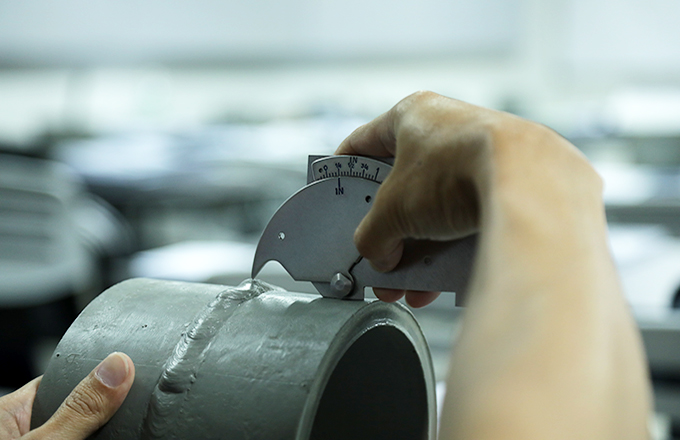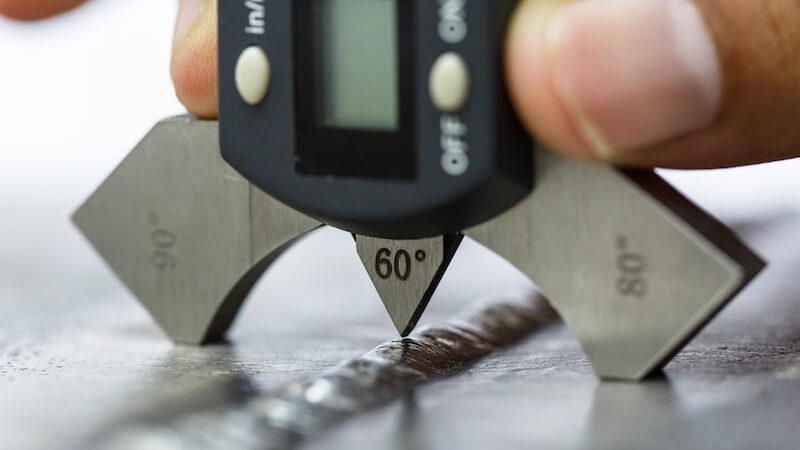Guaranteeing Safety And Security with Trusted Welding Inspection Milwaukee Techniques
Guaranteeing Safety And Security with Trusted Welding Inspection Milwaukee Techniques
Blog Article
A Detailed List for Effective Welding Evaluation Practices
In the realm of welding, the integrity of frameworks is paramount, requiring an extensive technique to inspection methods. A thorough checklist serves as a crucial tool in making sure adherence to industry requirements, encompassing necessary pre-welding, in-process, and post-welding evaluations. By methodically attending to material confirmation, weld quality, and extensive documentation, companies can considerably boost safety and security and performance. Nonetheless, what certain elements should be focused on in each stage to achieve ideal outcomes? Checking out these important components can generate understandings that exceptionally influence welding operations.
Recognizing Welding Specifications
Welding criteria play an important function in making certain the quality and safety of bonded frameworks and parts. These standards develop the requirements for products, treatments, screening, and assessment, thus offering a framework for consistent quality control in welding processes. Different organizations, including the American Welding Culture (AWS), the International Company for Standardization (ISO), and the American Culture of Mechanical Designers (ASME), have actually developed thorough requirements that govern different facets of welding.
Understanding welding criteria is crucial for experts in the field, as adherence to these standards minimizes the danger of flaws and failings in welded joints. These requirements cover certain demands for weld quality, consisting of appropriate tolerances, the type of welding strategies to be made use of, and the credentials needed for assessors and welders.

Pre-Welding Examination Actions
Before any kind of welding process commences, a detailed pre-welding examination is necessary to determine possible concerns that may jeopardize the quality of the weld. This initial step functions as a vital structure for guaranteeing compliance with applicable welding codes and standards.
The first action in the pre-welding examination is to verify the materials being utilized. This includes monitoring for the correct kind and quality of steels as specified in the task paperwork. Next off, it is essential to examine the fit-up of the parts to make certain proper placement and joint arrangement. Imbalance can lead to inadequate infiltration and structural weaknesses.
Additionally, reviewing the sanitation of the surfaces is vital; impurities such as rust, paint, or oil can negatively impact the high quality of the weld. Following this, a comprehensive analysis of the welding equipment must be carried out, making certain that it is adjusted and in excellent working condition.
Lastly, evaluating the qualifications of the welding workers is crucial. Welders have to possess the required qualifications and experience to execute the specific welds required for the job. By sticking to these pre-welding evaluation actions, the probability of defects and failures in the last weld can be dramatically lowered.

In-Process Examination Methods
In-process examination techniques play a crucial function in guaranteeing the stability and top quality of welds as they are being performed. These techniques permit examiners to recognize flaws or variances from specifications in actual time, consequently preventing expensive repair services and guaranteeing adherence to style requirements.
One secret method entails aesthetic assessment, where assessors analyze the weld bead for harmony, infiltration, and correct profile. This can be enhanced article source by the usage of gauges to measure weld dimensions, ensuring compliance with fixed resistances. Furthermore, the application of non-destructive screening (NDT) approaches, such as ultrasonic testing or magnetic fragment screening, throughout the welding process can disclose subsurface problems that might not be noticeable externally.
An additional important aspect is monitoring welding parameters, including voltage, amperage, and travel rate. Consistency in these specifications is crucial for achieving ideal weld high quality. Documenting these specifications during the welding procedure supplies a deducible record for future recommendation.
Training workers in proper assessment techniques and using appropriate tools boosts the performance of in-process inspections. By integrating these methods, organizations can achieve greater top quality welds, lower rework, and eventually make sure the safety and security and integrity of welded structures.
Post-Welding High Quality Checks
Adhering to the conclusion of welding procedures, post-welding quality checks are crucial to confirm that the welds fulfill all defined standards and requirements. These checks are necessary for making sure the honesty and longevity of the welded joints. The inspection process usually begins with a visual examination, analyzing for surface area issues such as fractures, porosity, or incomplete fusion.
Consequently, non-destructive testing (NDT) methods, such as ultrasonic testing, radiographic screening, or magnetic particle screening, may be employed to spot internal imperfections that are not visible to the nude eye. Each technique has its special advantages and is picked based upon the weld's area, product type, and the nature of the application.
Analyzing the mechanical properties useful site of the weld, consisting of tensile strength and ductility, can offer further guarantee of performance under operational conditions. Generally, detailed post-welding examinations are vital for maintaining efficiency, adherence, and safety to regulative and sector requirements.
Paperwork and Reporting
Exactly how can effective paperwork and reporting boost the welding inspection process? Exact documentation and extensive reporting are vital parts that make sure the honesty and quality of welding procedures. Welding Inspection Milwaukee. They work as a formal record of examination findings, facilitating responsibility and traceability in compliance with sector criteria

A well-structured reporting system makes it possible for inspectors to plainly communicate any kind of non-conformances, areas, or inconsistencies calling for renovation. This transparency promotes a setting of continual renovation, as stakeholders can readily assess past efficiency and implement corrective actions.
In addition, effective paperwork includes in-depth documents such as welding treatment specs (WPS), welder credentials, and inspection lists. These aspects give a structure for examining weld high quality and adherence to established standards. In case of disputes or high quality problems, extensive documents offers as a dependable reference, reducing obscurity and shielding all celebrations included.
Finally, keeping arranged records assists in training and licensing workers, making sure that sector finest practices are maintained. Eventually, precise paperwork and reporting not just improve the welding inspection procedure yet likewise add to the general safety and security and integrity of welded frameworks.

Verdict
In verdict, Website a thorough checklist for reliable welding inspection methods is vital for making sure top quality and safety in bonded frameworks. Adherence to developed welding criteria, precise pre-welding evaluations, extensive in-process assessments, and complete post-welding high quality checks collectively add to the integrity of bonded joints.
Welding requirements play an important function in making sure the high quality and safety and security of bonded elements and structures. Numerous companies, including the American Welding Culture (AWS), the International Organization for Standardization (ISO), and the American Culture of Mechanical Engineers (ASME), have actually created extensive standards that govern various elements of welding.
Following the completion of welding operations, post-welding top quality checks are crucial to verify that the welds fulfill all specified requirements and needs - Welding Inspection Milwaukee.In conclusion, a detailed list for effective welding examination methods is crucial for making certain high quality and safety in welded structures. Adherence to developed welding requirements, precise pre-welding inspections, rigorous in-process analyses, and extensive post-welding top quality checks collectively add to the integrity of bonded joints
Report this page